Walking around Campo Santo Stefano is certainly relaxing. In this area of Venice there are interesting exhibitions and art galleries, as well as beautiful palazzi, and many curious things to discover. Many occasional tourists pass here on their way to St. Mark's Square, but they seem absent-minded, so focused on checking out Rialto Bridge and the Palazzo Ducale that they forget to take their noses out of their maps and guidebooks to admire the rest the city has to offer.
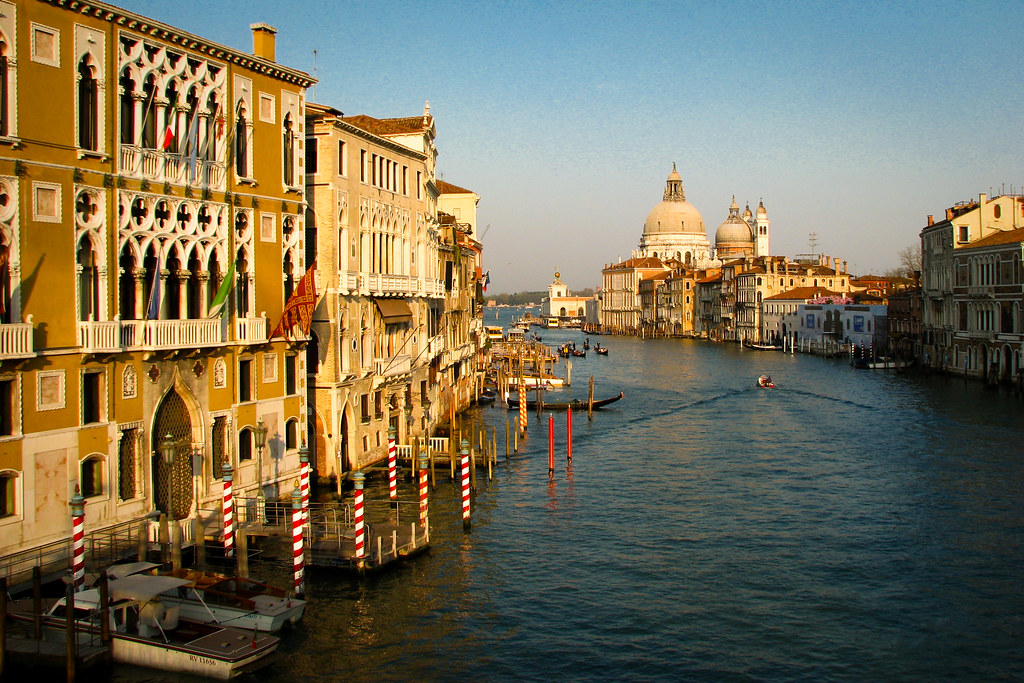 |
| View from the Accademia Bridge (picture by Koalie on flickr) |
At the moment, if it's evening and the sun has already set, you can admire this art installation, part of the 2013 Art Biennale. It is an iron statue by artist Jaume Plensa that casts a fascinating shadow on the gothic Palazzo Franchetti. This charming palace now houses the Istituto Veneto di Scienze, Lettere e Arti.
If it's not dark, you can enter to see the well and the small garden, or visit one of the temporary art exhibitions. The gate is really beautiful at night. For a moment, you'll think you are in Istanbul. As a matter of fact, in the past the two cities were connected through trade routes, and Venice is built on the myth of Istanbul. You'll see many architectonic details that will remind you of Istanbul if you know where to look.
You are now in the Sestiere of San Marco, the most expensive and prestigious of the neighbourhoods of Venice. If you turn left just after the Accademia Bridge, there is a maze of streets that leads to Palazzo Grassi, another palace where major art exhibitions are held. It's always worth to look what's on in this venue. Sometimes Venetian houses shelter secret gardens, undetectable from the outside. The picture that follows was taken inside Palazzo Malipiero during an exhibition of the Biennale a couple of years ago. Giacomo Casanova, the famous 18th-century seducer who incidentally also escaped from the prison inside Palazzo Ducale, used to live in this house as a boy, in what was at the time the most libertine city in Europe, full of casinos and bordellos.
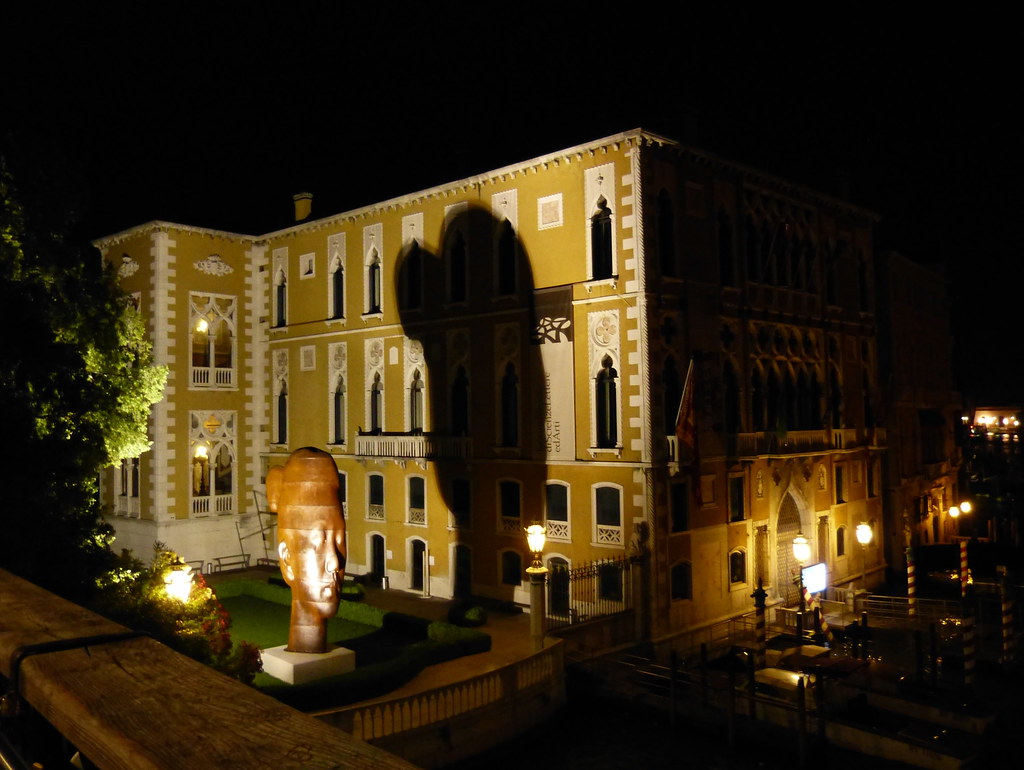 |
| The statue in the garden of Palazzo Franchetti |
If it's not dark, you can enter to see the well and the small garden, or visit one of the temporary art exhibitions. The gate is really beautiful at night. For a moment, you'll think you are in Istanbul. As a matter of fact, in the past the two cities were connected through trade routes, and Venice is built on the myth of Istanbul. You'll see many architectonic details that will remind you of Istanbul if you know where to look.
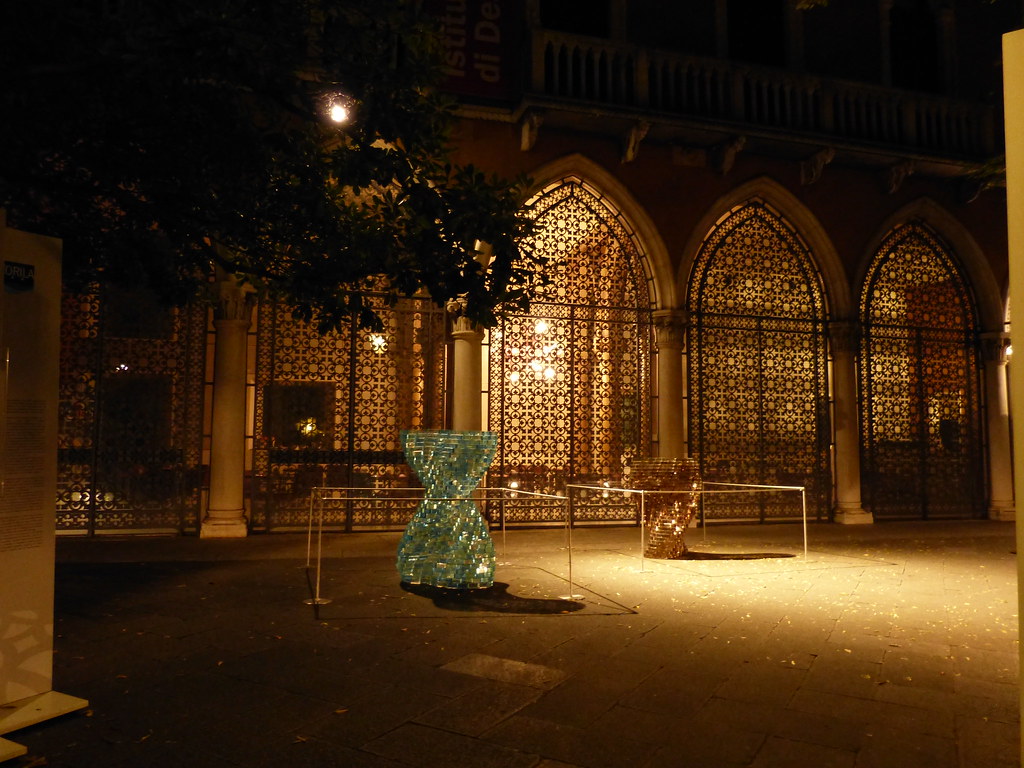 |
| The gate at Palazzo Franchetti with an art installation concerning glass |
You are now in the Sestiere of San Marco, the most expensive and prestigious of the neighbourhoods of Venice. If you turn left just after the Accademia Bridge, there is a maze of streets that leads to Palazzo Grassi, another palace where major art exhibitions are held. It's always worth to look what's on in this venue. Sometimes Venetian houses shelter secret gardens, undetectable from the outside. The picture that follows was taken inside Palazzo Malipiero during an exhibition of the Biennale a couple of years ago. Giacomo Casanova, the famous 18th-century seducer who incidentally also escaped from the prison inside Palazzo Ducale, used to live in this house as a boy, in what was at the time the most libertine city in Europe, full of casinos and bordellos.
Once you have made your way back to the main street, walk through Campo Santo Stefano, which is one of the biggest squares in Venice. The statue in the middle is that of Niccolò Tommaseo, affectionately called "Il Cagalibri" (the "book-shitter") by Venetian people. The statue gets its name from the pile of books that helps the statue gets its balance. If you have a sweet tooth or, if you're simply hungry, you could stop at the panificio (bakery) in Calle dello Spezier, the small street leading to Campo San Maurizio on your right. It's in front of an art gallery, so you can't miss it, and if offers delicious quiches, as well as macarons, wraps, sandwiches, focacce and much more.
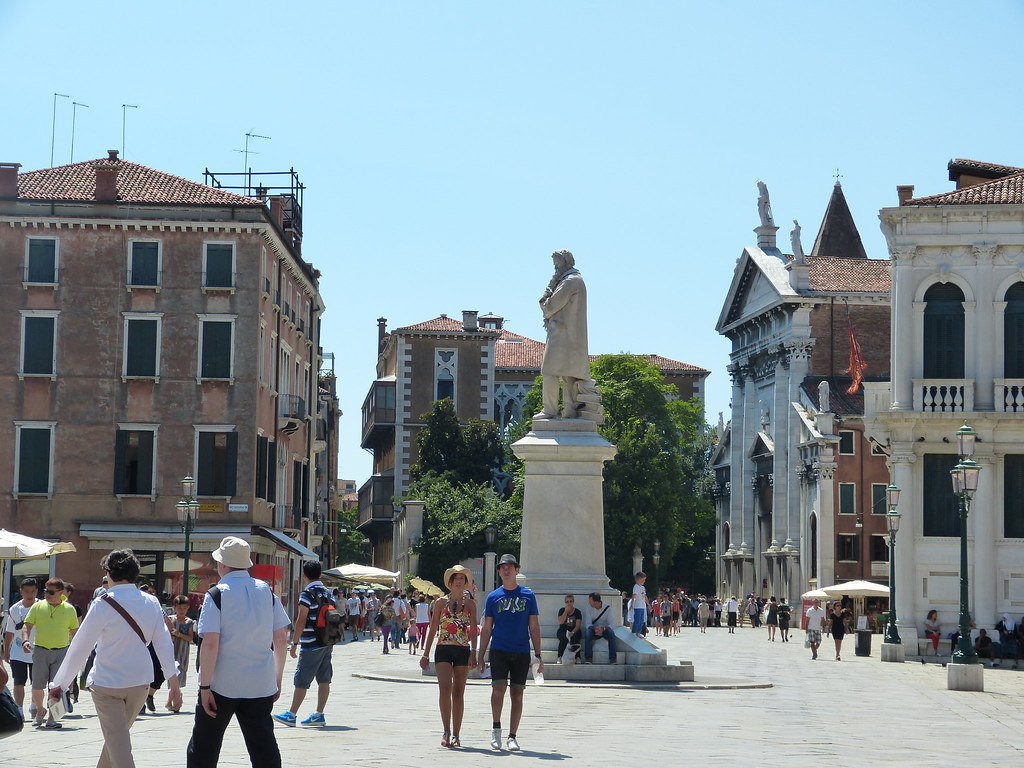 |
| Campo Santo Stefano and "il cagalibri" statue |
At the other end of Campo Santo Stefano, you can see Chiesa di Santo Stefano. I particularly like the portal on the side of this church.
If you continue along Calle della Mandola, next you have Campo Sant'Angelo, with its crooked bell tower, and then Campo Manin, with another big statue in the middle. The man celebrated here is Daniele Manin, a patriot that helped Venice gets its independence from the Austrian domination in the 19th century.
If you take a small calle called Calle de la Vida o de Le Locande, to your right from Campo Manin, you'll find a little treasure: Scala Contarini del Bovolo, built at the end of the 15th century in an inner courtyard of this palace. "Bovolo" in Venetian dialect means "snail" or "curl". Unfortunately, at the moment it is not possible to visit the palace and the staircase, but you can admire it from behind a gate.
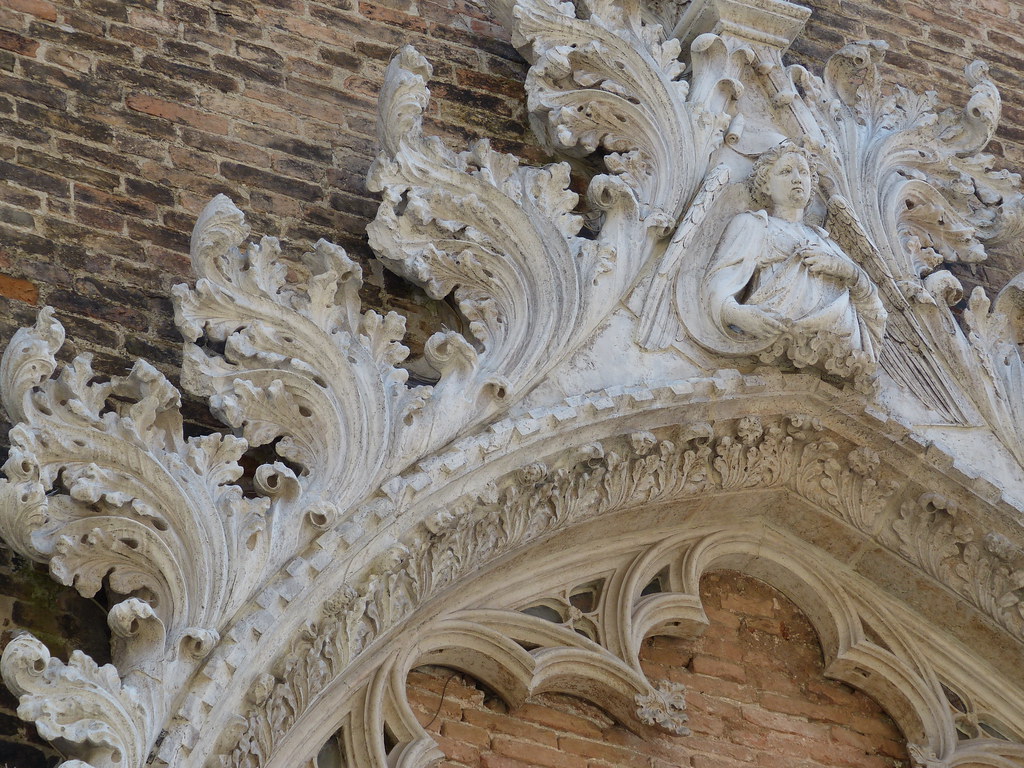 |
| The portal of Chiesa di Santo Stefano |
If you continue along Calle della Mandola, next you have Campo Sant'Angelo, with its crooked bell tower, and then Campo Manin, with another big statue in the middle. The man celebrated here is Daniele Manin, a patriot that helped Venice gets its independence from the Austrian domination in the 19th century.
If you take a small calle called Calle de la Vida o de Le Locande, to your right from Campo Manin, you'll find a little treasure: Scala Contarini del Bovolo, built at the end of the 15th century in an inner courtyard of this palace. "Bovolo" in Venetian dialect means "snail" or "curl". Unfortunately, at the moment it is not possible to visit the palace and the staircase, but you can admire it from behind a gate.
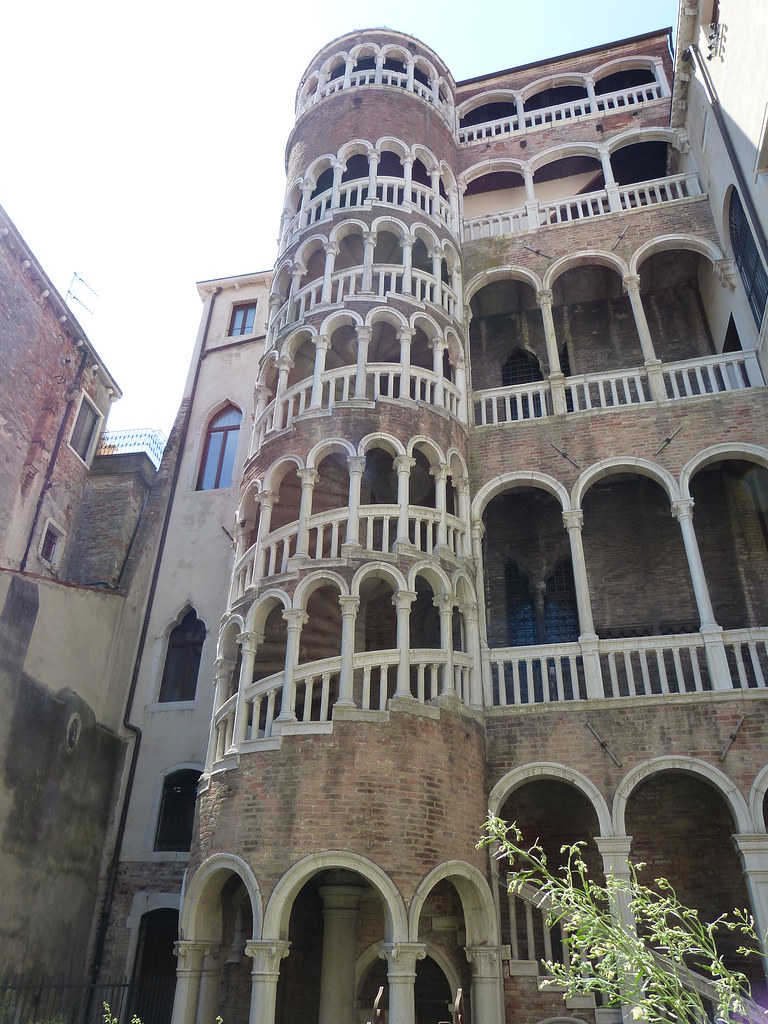 |
| Scala Contarini del Bovolo |
Another jewel of this area is Palazzo Fortuny, a magnificent if lesser visited gothic palace tucked in a backstreet. Catalan eclectic artist Mariano Fortuny used this palace as his atelier. It is now used as a museum with astonishing tapestries and fascinating displays from his works. The atmosphere inside Palazzo Fortuny is magic, almost resembling that of an enchanted castle. There are often contemporary exhibitions, so take a look at the official website. You can reach it from Calle della Mandola, turning right into a small street (Salizada del Teatro) that finishes in Campo San Beneto, but first stop and have a look at the canals on the Ponte della Cortesia.
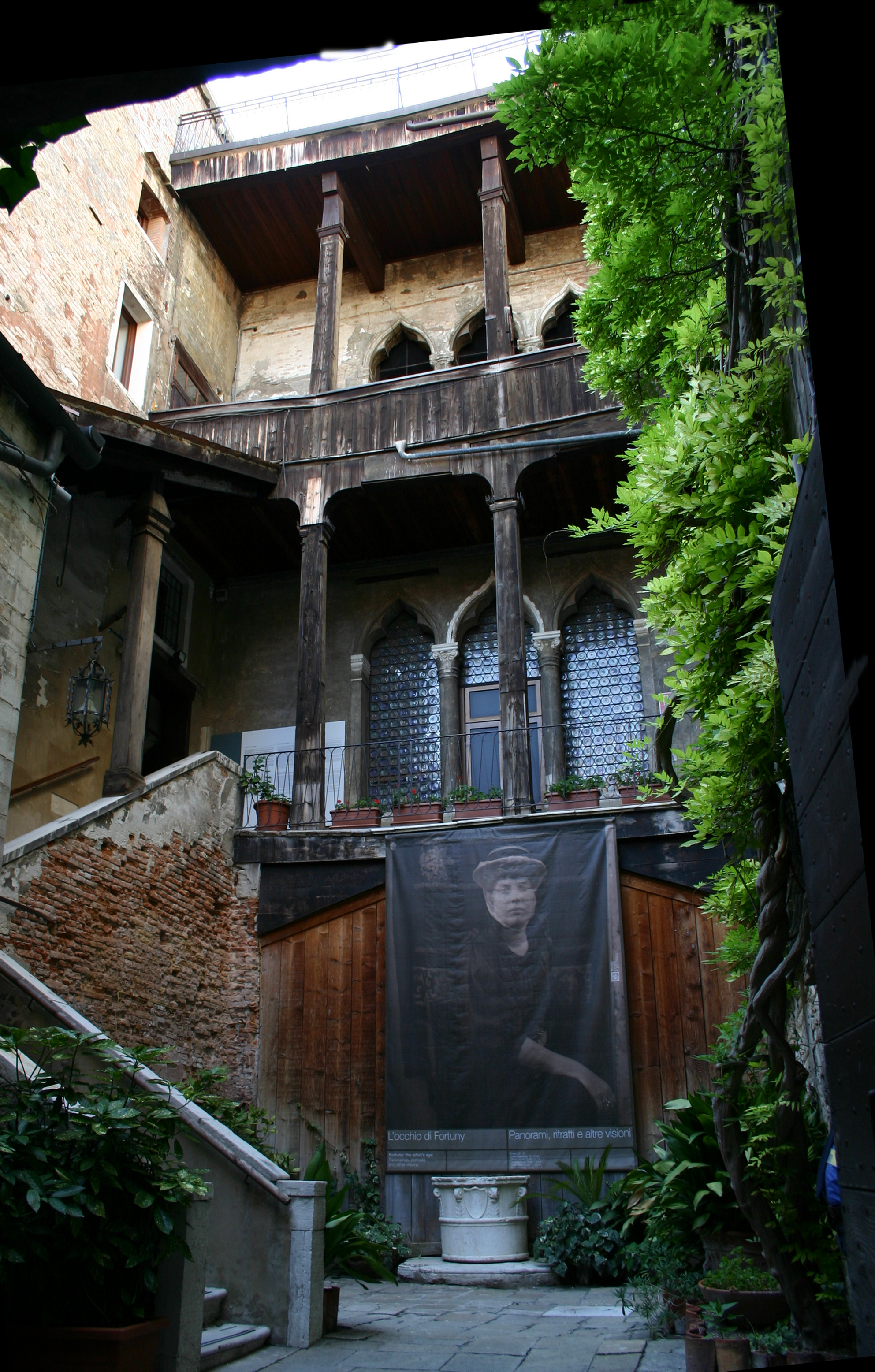 |
| The courtyard of Palazzo Fortuny (from Wikipedia) |
 |
| View from Ponte della Cortesia |
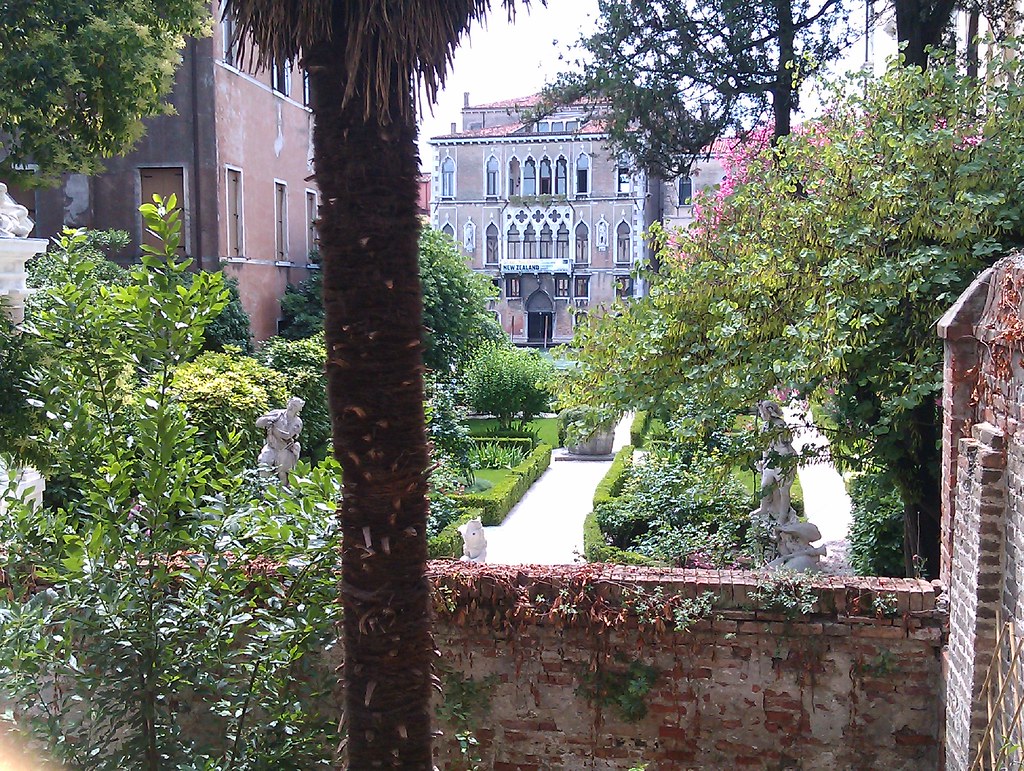
Venice is charming! Nice narration and pictures! I would love to experience its quaint life - canals, old architecture and the quiet beauty of it all. :)
ReplyDeleteVenice is so beautiful. I was about to go there last summer, but headed to Crete instead. Although I don't regret, I am adding Venice to my Europe bucket list and I won't miss it this time!
ReplyDeleteThank you girls. It is really a special town, to be visited little by little.
ReplyDeleteI love the narrow streets of Capo Santo. No wonder why you found the walking there so relaxing!
ReplyDelete